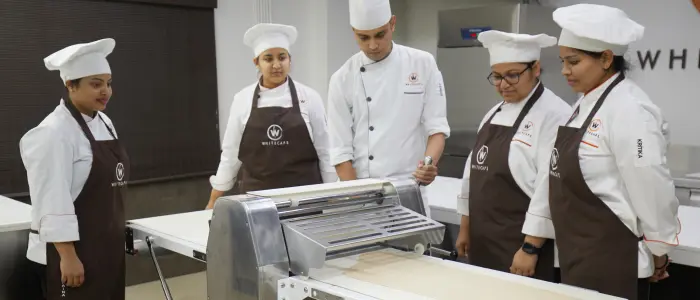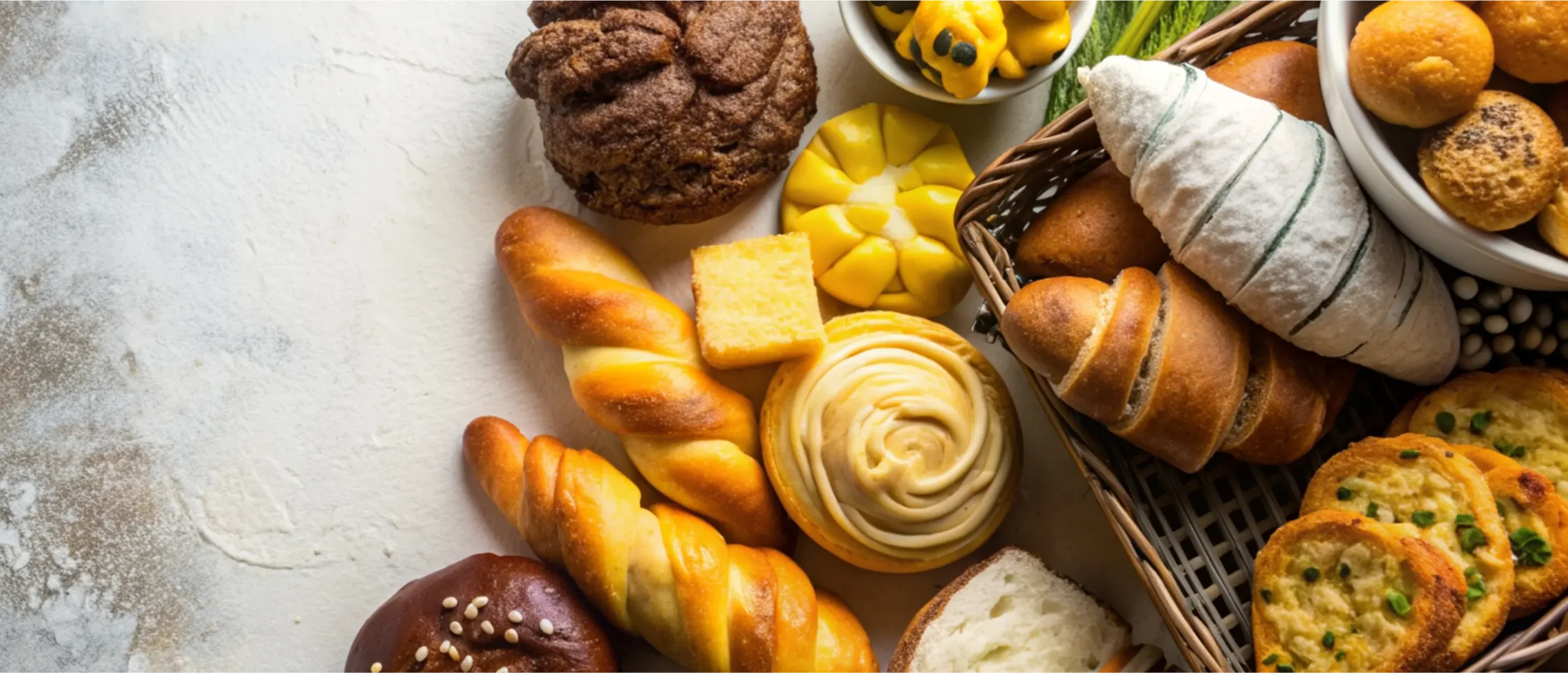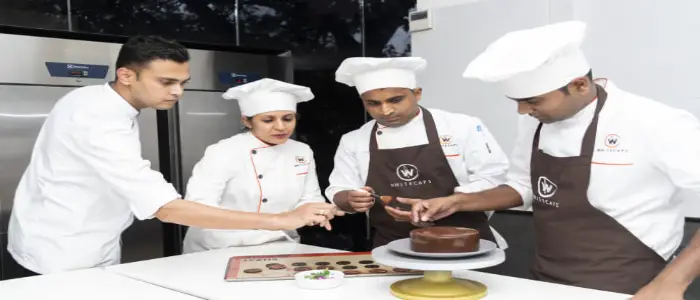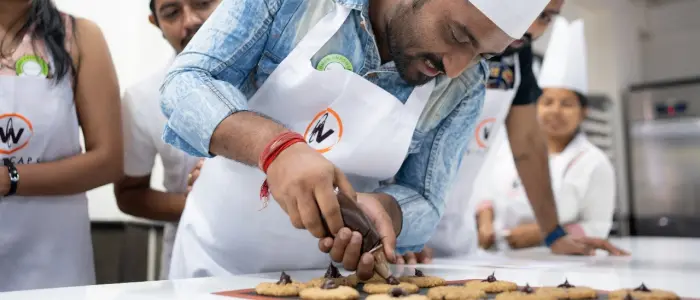Pastry has always been the heart of good baking. Whether it’s flaky buttery croissants or crisp filo pastry, each form of pastry has its own texture, taste, and method. Pastries have changed over the years, not only in taste but also in trends. Today, bakers are testing vegan puff pastry, gluten-free shortcrust, and even sourdough croissants, mixing the traditions with modern nutrition requirements.
In this guide, we will have a look at the 12 most crucial types of pastries every professional baker must learn, and we will also provide expert tips, measurement guides, and solutions to common mistakes. This list will be your go-to source whether you are just training to be a pastry chef or you are trying your skills at home.
What is Pastry?
Pastry is a dough consisting primarily of flour, fat, and water, usually baked into sweet pastry or savoury dishes. There is magic to the fat-to-flour ratio, and the technique of rolling, chilling, and layering all influence the outcome, whether it is light, flaky, crumbly, or crisp.
According to Nielsen reports, which were published in a Commercial Baking magazine, there was a massive increase in home baking supplies over the previous year (ending March 28, 2019). Baking yeast sales increased by 457 per cent, baking powder increased by 178 per cent, and flour increased by 155 per cent.
Contemporary baking has brought pastry beyond its traditional boundaries as plant-based butters, gluten-free flours, and novel laminations make pastry more inclusive and versatile.
12 Types of Pastries
Pastries are numerous, each with different flavours, textures, and techniques. The crispy and flaky layers of the soft and airy doughs all have a specific role in baking and pastry. Now, we will take a look at the 12 pastry types that every baker should be aware of.
1. Puff Pastry (Pâte Feuilletée)
- Definition: Traditional laminated dough and hundreds of flaky layers.
- Texture: Airy, crisp, and light.
- Used in: Pies, turnovers, patties.
- Type of Dough: Laminated and repeated folding and chilling.
2. Choux Pastry
- Definition: Dough leavened with steam.
- Texture: hollow, airy, pipeable.
- Used in: Eclairs, profiteroles, cream puffs.
- Type of Dough: Flour-butter mixture cooked, enriched with eggs.
3. Filo Pastry
- Definition: Sheets of paper-thin pastry, frequently covered in butter.
- Texture: Baked, crisp, and flaky.
- Used in: Baklava, spanakopita.
- Type of Dough: Rolled out very thin, typically store-bought.
4. Shortcrust Pastry
- Definition: A flaky pastry that has much more fat than flour.
- Texture: tender, crisp.
- Used in: Tarts, pies, quiches.
- Type of Dough: Non-laminated, minimum handling.
5. Flaky Pastry
- Definition: A less dense, simpler puff pastry.
- Texture: Flaky, though not as regular as puff.
- Used in: Sausage rolls, savoury pies.
- Type of Dough: rough lamination, less folding.
6. Sweet Crust (Pâte Sucrée)
- Definition: Sweetened pastry dough with sugar and possibly eggs added.
- Texture: Firm tender.
- Used in: Fruit tarts, custard tarts.
- Type of Dough: Non-laminated, enriched dough.
7. Croissant Dough (Laminated Yeast Dough)
- Definition: Laminated yeast dough.
- Texture: Tender, soft, flaky, layered crumb.
- Used in: Croissants, pain au chocolat, Danish pastries.
- Type of Dough: Laminated with yeast fermentation.
8. Hot Water Crust Pastry
- Definition: Traditional British pastry made with hot water and lard or butter.
- Texture: Hard, workable.
- Used in: Meat pies, pork pies.
- Type of Dough: Hot, mixed, and shaped warm.
9. Rough Puff
- Definition: Quick substitute for puff pastry.
- Texture: Rough flakes, not really precise.
- Used in: Quick pies, savoury bakes.
- Type of Dough: Lumps of butter in dough.
10. Suet Crust
- Definition: British pastry that is enriched with suet (or vegetarian alternatives).
- Texture: dense, soft, good to steam.
- Used in: Steamed puddings, savoury suet rolls.
- Type of Dough: Steamed or Boiled, Non-laminated.
11. Danish Pastry
- Definition: Sweet laminated dough with fillings added.
- Texture: Layer, sweet, soft.
- Used In: Cheese Danish, cinnamon rolls.
- Type of Dough: Laminated, sugar and yeast enriched.
12. Modern Speciality Pastries
Definition: Inventions in the production of pastry to meet the dietary requirements.
Examples:
- Shortcrust based on rice or almond flour (Gluten-Free).
- Plant-based butter Vegan Puff Pastry.
- Sourdough Croissants with the taste of tang and depth of fermentation.
- Laminated Doughs of Matcha or Chocolate to infuse flavour.
These 12 pastries are the basis of any career of a professional baker. Each of these doughs requires precision, patience, and creativity, which can be applied across countless recipes. In case you are keen on developing your skills further, you can learn more about organised eggless baking courses that will allow you to reinvent these classics in new and exciting forms.
Measurement & Technique Tips for Perfect Pastries
Pastry is about balance. The proportion of flour to fat, the chilling time, and the thickness of rolling can be the difference between a crispy, flaky bake and a dense one. Here is a short checklist to get you on the same track:
|
Pastry Type |
Flour: Fat Ratio |
Recommended Chill Time |
Rolling Thickness |
|
Shortcrust |
2:1 |
30–60 min |
3–4 mm |
|
Puff Pastry |
1:1 to 1:2 |
20–30 min per fold + overnight |
3–5 mm |
|
Choux Pastry |
N/A (steam-leavened) |
Use immediately |
Pipeable |
|
Filo Pastry |
N/A (sheets) |
Rest 1 hr (if handmade) |
Paper-thin |
|
Rough Puff |
1:1 to 1:2 |
Chill between folds (20 min) |
4–6 mm |
|
Hot Water Crust |
2:1 |
Shape while warm |
Mould by hand |
|
Suet Crust |
2:1 (flour: suet) |
30 min |
1–2 cm (for steaming) |
|
Sweetcrust |
2:1 + sugar/eggs |
60 min |
3 mm |
The ideal pastry is a matter of practice, accuracy, and technique. By adhering to these ratios and techniques, you will be able to get consistent, bakery-style results each time. To practice these skills, specialised workshops may be an excellent tool to perfect them with the help of a professional. At Whitecaps, our structured baking vs pastry courses include detailed modules on lamination, ratios, and troubleshooting, while also understanding the role of pastry in the culinary arts.
Common Mistakes & How to Fix Them
In India, the enrolment in pastry arts courses has increased by over 30 percent in the past three years, which is an indication of how much interest people have developed in learning these arts and mastering their styles and avoiding the pitfalls.
Making pastry can be challenging, even for skilled bakers. Errors can be as minor as butter melting too fast or dough shrinking in the oven, and influence the result of the final product. The following is a brief troubleshooting guide; it helps identify problems before they become serious and resolve them with the least hassle.
|
Pastry Type |
Common Mistake |
Why It Happens |
Fix It With |
|
Puff Pastry |
Layers don’t rise |
Butter melted, dough too warm |
Chill thoroughly; use firm butter |
|
Choux Pastry |
Puffs collapse |
Underbaked or delayed baking |
Bake fully; pipe & bake immediately |
|
Shortcrust |
Turns tough |
Overmixed or warm ingredients |
Use cold butter, minimal handling |
|
Filo Pastry |
Sheets dry/crack |
Exposed to air |
Cover with a damp towel while using |
|
Sweetcrust |
Shrinks in the oven |
Overworked gluten/skipped chilling |
Chill before baking; don’t overmix |
|
Rough Puff |
No flakes |
Butter smeared, not layered |
Keep butter chunky and dough cool |
|
Danish/Croissant |
Dense or greasy |
Underproofed or butter leakage |
Proof properly; seal butter |
Conclusion
Pastry is an art of patience, precision, and passion. Whether it is the basic shortcrust or the elaborate puff pastry, all the methods contribute to the knowledge of a baker.
At Whitecaps International School of Pastry, we educate students on traditional techniques as well as current trends so that they can adjust their skills to the current baking industry. Whether you dream of becoming a pastry chef or running your own bakery, our programs open doors to career opportunities in baking and pastry. Are you a baker who loves to make world-class pastries? You can now sharpen your skills with the help of an expert.
FAQs
Q1: What are the four main types of pastry?
The four basics are shortcrust, puff, filo, and choux pastry.
Q2: Which pastry is best for pies?
Shortcrust pastry is the most common base for pies due to its crumbly, firm texture.
Q3: Can pastry be made vegan or gluten-free?
Yes, modern recipes allow plant-based butters and alternative flours to create vegan or gluten-free pastries.
Q4: What’s the difference between puff and flaky pastry?
Puff pastry is more labour-intensive with precise lamination, while flaky pastry is quicker and less layered.
Q5: Which pastry should beginners start with?
Shortcrust pastry is the easiest and most forgiving for new bakers.






